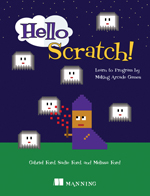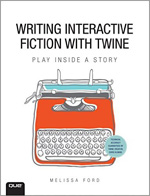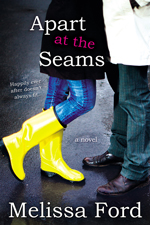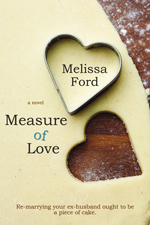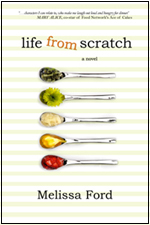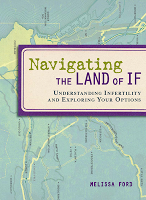My Son Bought Lunch at School, and I Cried
On Thursday morning, my son announces that he wants to buy lunch at school. They are serving pizza — one of the 6 foods he currently eats — which he claims “looked good” when he saw it on someone else’s tray earlier this month. I suspect the real reason he wants to buy lunch has to do with the fact that his kindergarten teacher has a song she sings each morning for the lunch buyers that includes their name (it really is a catchy song — I sing it all the time in the house) whereas she says the names of the lunch bringers. I am sure this is a matter of time constraints since there are more bringers than buyers, and the song is used to work teaching moments even into the mundane classroom business tasks, but the song has a strong pull. Most kids ask to buy at some point just to hear their name sung out to the class.
I could lie and say that I have nothing against school lunch, but I have a lot against school lunches, even though I remember the joy I felt the few times I bought lunch when I was little. I mean, come on, it’s a rite of passage. Not just the eating the strange and plastic-y food stuffs (because you can get that at home with a bag of Doritos), but the standing in line, the smell, the pride in having your own money to spend. He wants to show me that he’s responsible. That he can go to the kindergarteners’ version of a restaurant, order his meal, and pay for it (with money I gave him) … ALL BY HIMSELF.
I should want to encourage this because it certainly saves me time to not have to make food or pack the lunchbox or wash the reusable lunch equipment — even if it’s just for a day. It’s a responsibility thing for him, but it’s a break for me. A cheap break at that — lunch only costs $2.50 per meal.
So those are the good parts about buying lunch — responsibility for him, a break for me — so why does his request to purchase lunch strike such fear in my heart?
When we were taking a tour of the school last year, we swung by the lunch room and the guide told us about the lunch routine. She started ticking off some of the things kids can buy and when she mentioned the pizza, she touched my arm with concern and said, “I don’t want you to worry, but the cheese isn’t real cheese. It isn’t dairy.”
I’m not sure why I would be worried about cheese being made from milk. Frankly, I was worried about why it wasn’t made from milk. I inquired what the cheese was if not dairy, and she shrugged her shoulders and said, “I don’t know.” And while I was fairly calm over the idea of pizza, THAT was what freaked me out.
Because I think we’ve all seen enough of Jamie Oliver’s tears to know that there is very little food in school lunches these days. There is food stuff. There are chemicals and strange preservatives. There are schools that have started making healthful choices, but even with those healthful choices, you simply can’t provide meals to that many kids that match the quality of what can be made in small batches at home.
Canned or frozen vegetables are used because the school staff doesn’t have time to individually shell peas. My pizza at home has homemade, high-protein dough, homemade tomato sauce, and real cheese. Their pizza at school comes shrink wrapped in plastic. And I can’t expect more than that because it’s a small staff who need to put out many meals. And they do it well and they do it within a small budget, they just can’t compete with homemade food.
A friend who has a first grader was over this summer and she warned me about school lunches. “I ate there once,” she said. “The menu said it was serving mac-n-cheese and green beans. Then the food came out on the tray. The mac-n-cheese was inexplicably smothered in an additional layer of sour cream and shredded cheese. The grey, canned green beans were covered by a pool of cream of mushroom soup and another layer of shredded cheese. This was not food. This was a heart attack waiting to happen.”
I am cognizant of the fact that if you live in America and you don’t live in an underground bunker off the grid, your child will be exposed to junk food everywhere they turn; and that junk is the stumbling blocks towards good health. It is so much easier — and tastier — to allow yourself to fall over those stumbling blocks than it is to pick your way around them. Junk food tastes good. I’m sure this pizza will taste great and he’ll want it several more times. And there’s nothing wrong with eating that junk food every once in a while, but it’s a slippery slope. Just as you can’t eat just one Pringle, it’s hard to taste junk food and go back to eating the good stuff — especially when you’re still surrounded by the junk food. In my experience, junk food went from every once in a while to a daily struggle not to consume it. Even if I restrain myself from consuming it by not stocking it in the house, I still think about it. Junk food can be as bad as any addictive drug.
So I don’t want to start down this road because I’m not sure how to temper it, how to keep a rein on what he’s consuming until he can make good choices for himself. I want him to love his body and treat it right, much like how expensive car drivers croon over their vehicles, giving them the best gasoline, the best oil change service. He loves to cook with me, and I want him to always choose that slow food that we took time to make well over the fast food that fills the body, but provides little nutrition.
And an additional issue is that out of the house, my kids eat vegetarian. They can tick off what they can eat and what they can’t, but school lunch creates a sticky zone. They serve chicken nuggets and veggie nuggets on the same day, and my son mentioned wanting to buy the veggie ones. Yet he would never be able to tell the difference between the two if he was given the wrong one. I was told that when they serve pancakes, sausage comes on every plate. And we just don’t eat food that has been on the same plate as meat, much less pork. It becomes a matter of assimilation vs. ethics — I want them to be like all the other kids at school, but I also want us to stand by our beliefs regardless of where we go (at least until they’re 16 and we’ve told them that they can do as they please, meatwise).
And then there are food allergies. My twins have mild allergies, but still, I don’t want them exposed to their food allergens. They won’t necessarily know if something contains one of their allergens. It just feels like another bomb in this potential minefield.
On Friday morning, I put $2.50 in a sealed envelope. I write a message to his teacher on the front of the envelope and mention that I’ll be volunteering in the school library that day if there is any problem. When his class marches down the hallway to the lunch room, I give him a little space to get his food all by himself — after all, responsibility is one of the good points about this — and then sneak into the lunch room to wait for him.
Except he doesn’t come out of the lunch line.
So I tuck back into the kitchen area to see what is taking so long, and he is paused by the cashier station, unable to remember his pin number. I quickly call it out so he can punch it in, and duck back out again to give him his space. He marches proudly past me, clutching his styrofoam tray (the environmentalist in me cringes at all the single-use items): a slice of pizza, a bag of baby carrots … and a bottle of chocolate milk.
Except my son is allergic to chocolate milk.
I mention that to the supervisor, and she admits that my son told her that he was allergic, though he took it anyway because water costs extra. I quickly pay the difference, rush to grab the milk off his tray, and pass him the water he requested. It is all of my fears realized — that he wouldn’t remember the pin number for his account (though the adults in the lunch room could help him with that one), that he would take the wrong food (though I was there to catch that before it ended poorly), that he would eat the least nutritional, unenvironmentally-friendly lunch possible (no helping that).
But he loves it.
He sits there with his lunch, proudly eating it while talking with his friends. He radiates pride. It is as if he has just completed an Iron Man. And if I can buy that for $2.50, even with the hit his body and the environment takes in the process, it feels like a small price to pay for the occasional responsibility-building experience.
I walk out of the building and call my husband. And I cry on the ride home; because he is suddenly so grown-up, so mature, so not-my-little-baby anymore.
And just maybe, behind the nutritional arguments and the environmental arguments and all the other arguments against school lunch that I pull from my bag, my real problem with buying lunch is the process of letting go. Of letting them take control of their own destiny and knowing that I need to let them age away from me and my packed lunches.
One greasy, dairy-free slice of pizza at a time.
Do your kids buy or bring lunch at school?
Cross-posted with BlogHer.





